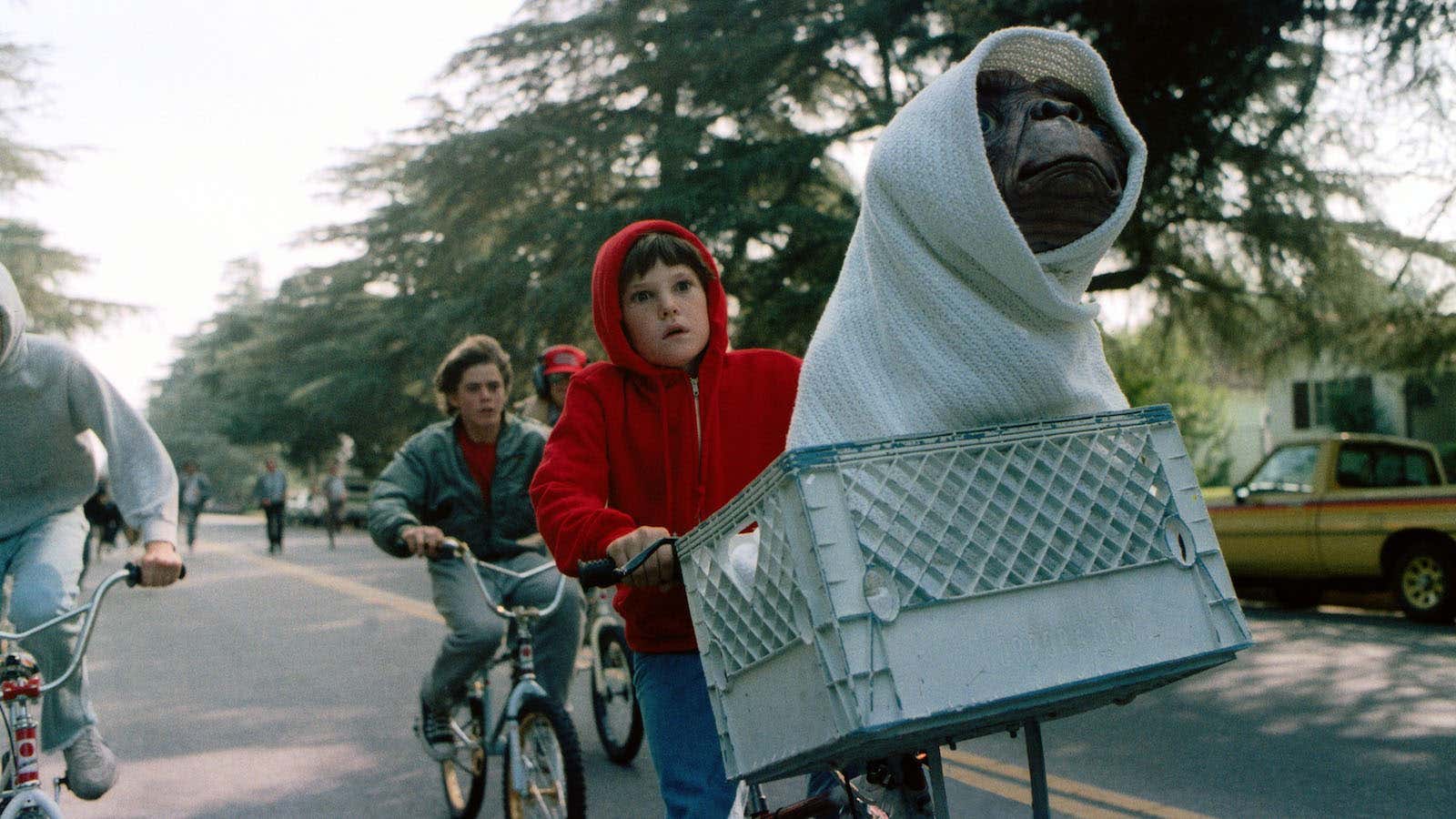Each of us contemplates the long-term future of our species at some point. Will we survive self-destruction? Will we migrate to the stars? Both as individuals and as a society, we typically call on imagination to ponder the big questions. Whether we choose to look 10 or 1,000 years into the future, we often seek the help of the science fiction artists, writers, filmmakers, and TV producers who can help us understand our place within the universe.
Visions of tomorrow inform the present and can inspire progress both socially and technologically. Astronauts like Mae Jemison and aerospace engineers like Bobak Ferdowsi and Elon Musk all speak of science fiction as a guiding influence for their careers. More significantly, science fiction can inspire everyday people to engage in visionary, long-term thinking.
As the founder of the Space Age Museum, a cultural history project that focuses on humanity’s evolution into a spacefaring civilization, my views on this subject are derived from more than 20 years of collecting vintage space toys, rescuing derelict spaceships, photographing roadside robots, and watching tons of science fiction. Here are some of the ways that science-fiction visions of tomorrow have helped me and many others understand the world we live in today.
A different perspective
If we are invested in a better future, we will be motivated to adapt and solve the problems we face now. Whether the future is portrayed as bright or dim, science fiction can coax us to think creatively by letting us leapfrog to the distant future where we may glimpse what radical change could look like. These stories often imply that we will survive as a species and overcome our challenges; but there are also many counter narratives warning that even though we may progress as a society, dangers abound. Cautionary tales like The Terminator, Mad Max, or Alien can therefore be as illuminating as more optimistic stories such as Interstellar, E.T., Contact, or Close Encounters of the Third Kind.
A multi-generational perspective that is scaled to encompass interplanetary habitation enlarges our understanding of our context within the universe and discourages shortsighted actions. These kinds of broader views prioritize aspirations like peaceful coexistence and conservation.
Connection and hope
The ability to transport people into the distant future also has inspirational value: Even though we currently lack the technical or social capacity to reach our goals, the vision of an eventual breakthrough breeds optimism and builds resolve. In an age of scientific reasoning and logic, people still seek hope and connection.
By providing imaginative ways to participate in events beyond our lifetimes, visions of the future can serve as beacons of faith and moral bearings for how we live today. Portrayals of a better tomorrow can also inspire actions that contribute to something greater than ourselves; when we emotionally invest in mythic ideas about the future, we feel empowered to actualize them. That sense of empowerment fuels purpose and fosters global communion with the rest of humanity. By taking a visionary stance, we can help equip our descendants for success.
Anything that helps people conceptualize the future, think beyond the present, and relate to characters with diverse identities is positive. Many classic space adventures aren’t centered around specific references to science, but they still provide imaginative glimpses of possibilities beyond today’s scientific reach. Sagas like Dune, Star Wars, and The Fifth Element portray a vast universe full of diverse worlds and extraterrestrial beings, and therefore offer powerful perspectives on humanity’s evolutionary course.
A tool for education
Moving forward, science fiction should be elevated to an academic level and recognized as more than a hobby or a fantastical escape. Where pure science can be difficult for some people to process, creative projections can make scientific theories more accessible to the general public, especially when communicated visually. In addition to inspiring scientists, engineers, and astronauts—as well as supporting STEM education—science fiction has the capacity to fuel the creative impulses of all kinds of people, including architects, designers, and politicians.
Carrying the torch for these visions of progress and sharing them with others can provide a sense of purpose in itself. I may not colonize another planet or develop technology that contributes to the goal, but by helping to cultivate the dream, I increase the possibility that others will find a way to get there eventually. And by this, I don’t just mean technological progress, but a more comprehensive transformation across society, including the abilities to improve environmentally, socially, and politically.
* * *
Everyone should seek out futuristic narratives in film, TV, and literature, and share them with the folks in their lives—especially young people. In this way, we can collectively shape ideals and concepts for a better tomorrow.
It is imperative for humankind to become increasingly self-aware and strategic on the larger scale of time and space; science fiction may be our most powerful tool for influencing popular thinking in this direction. Diverse visionaries in this field are greatly needed to produce intersectional concepts that push humanity toward a more promising trajectory. Whether we ultimately save ourselves and achieve cosmic migration or not, we can still have fun watching science fiction and participating in the dream of tomorrow, today.




